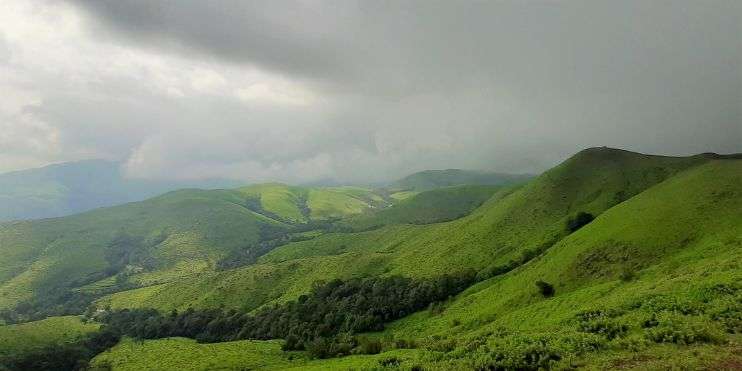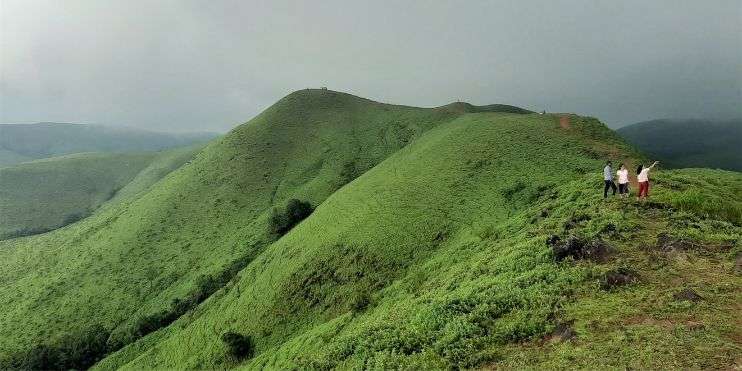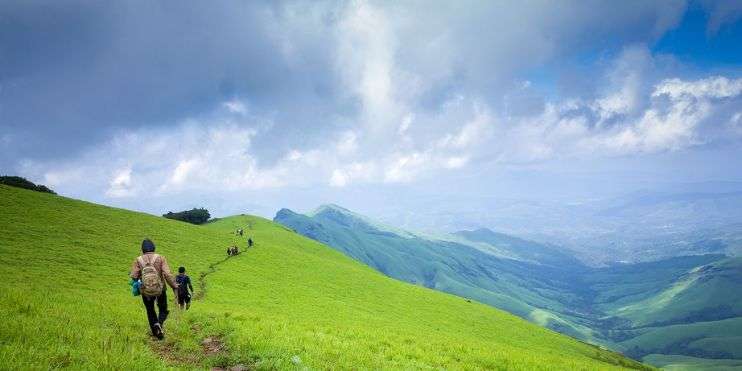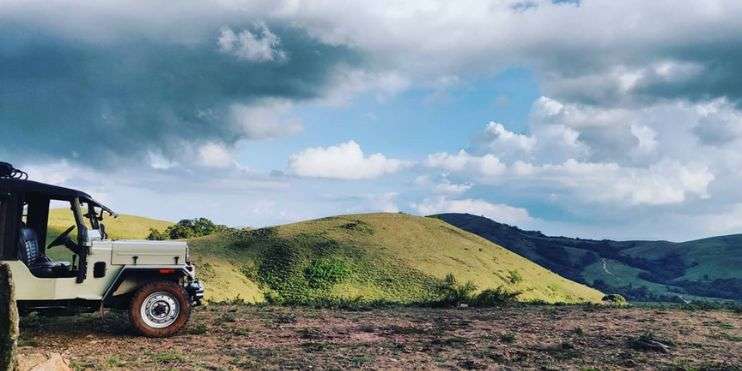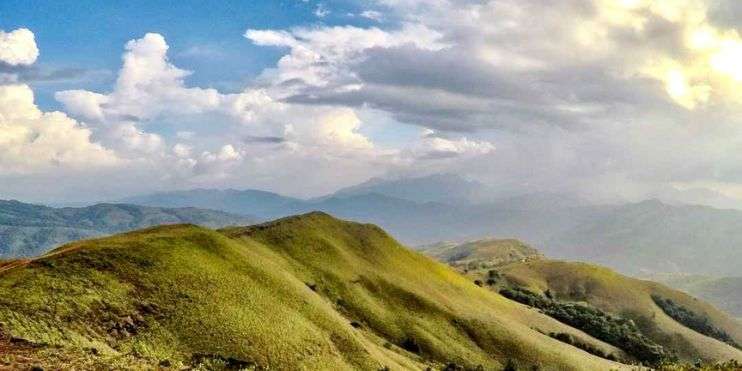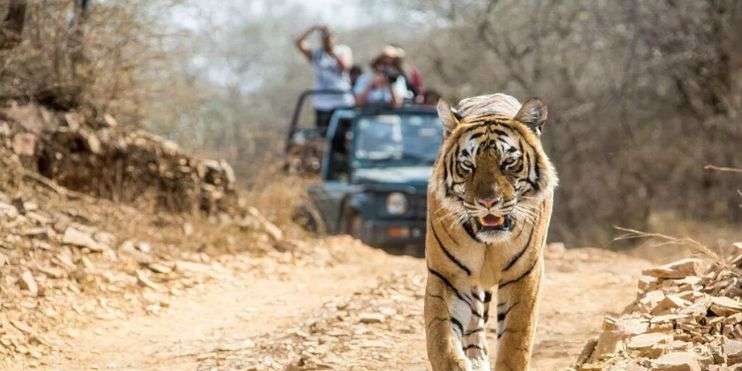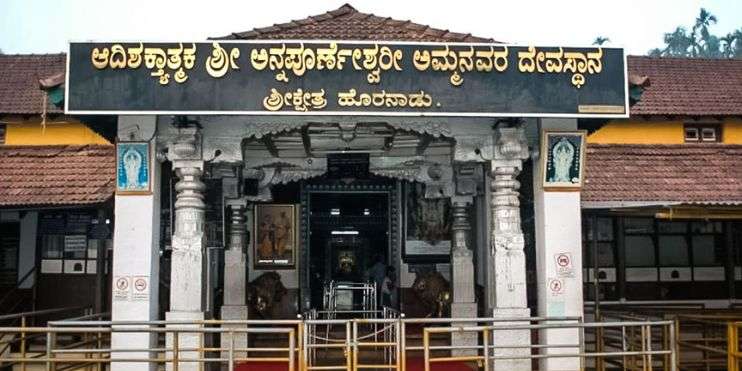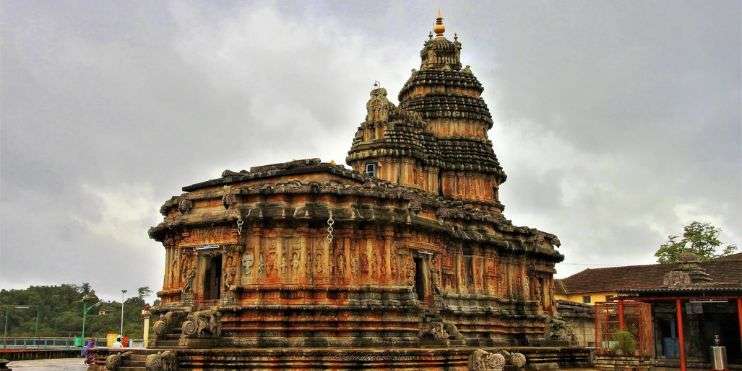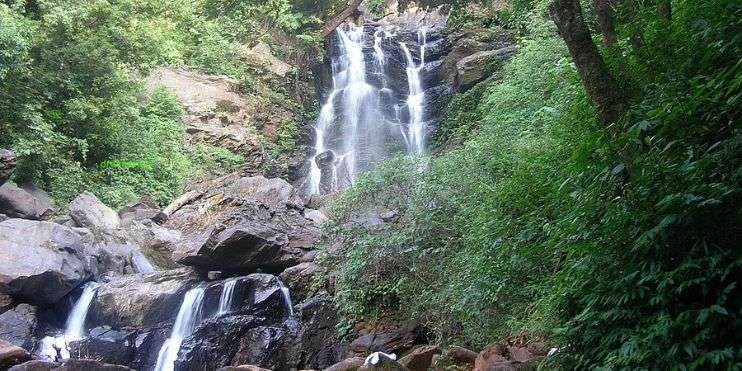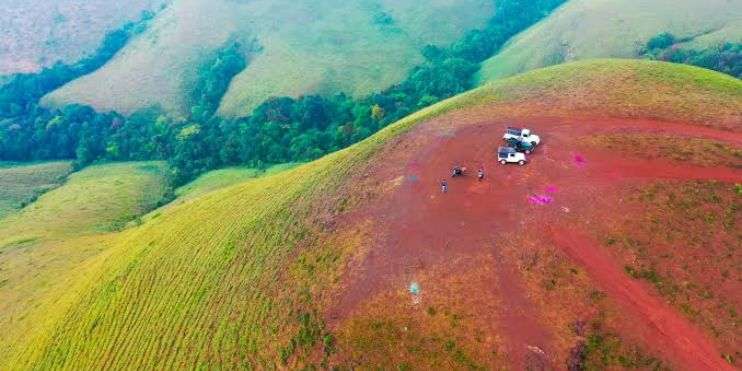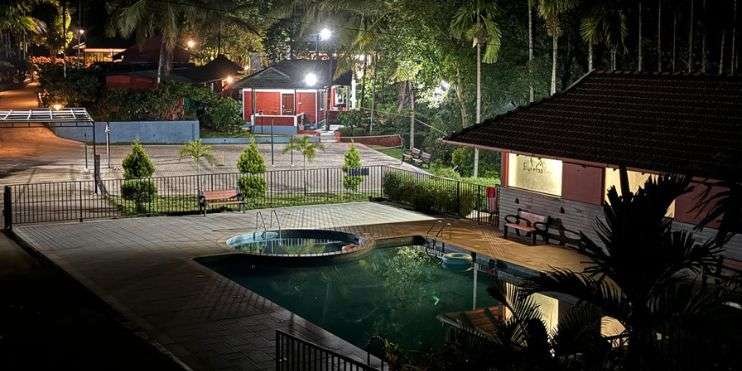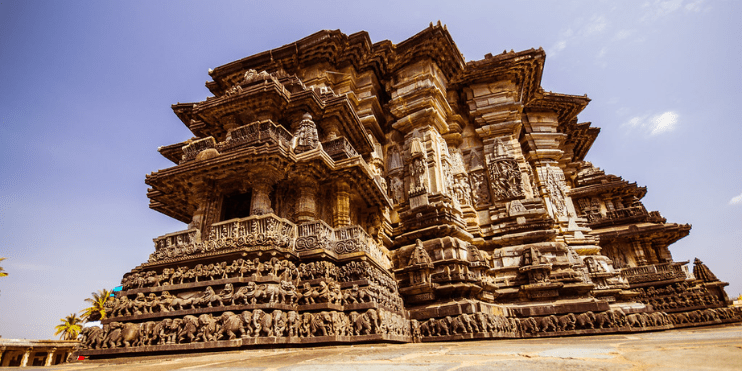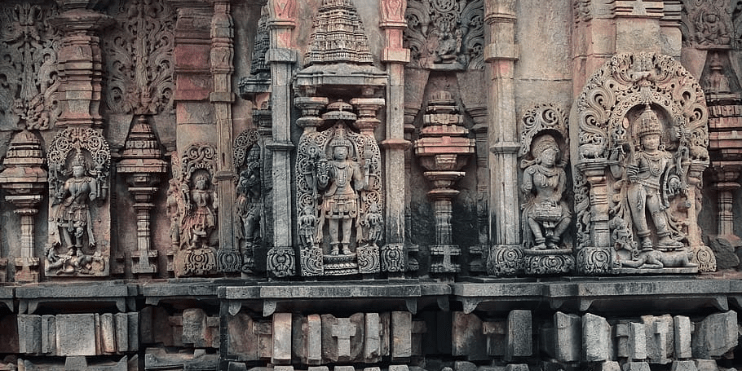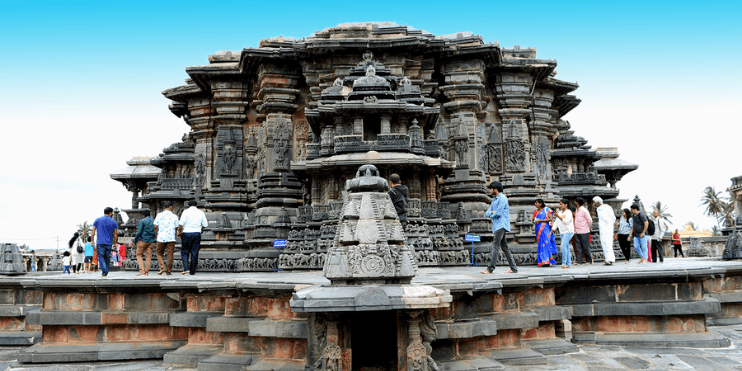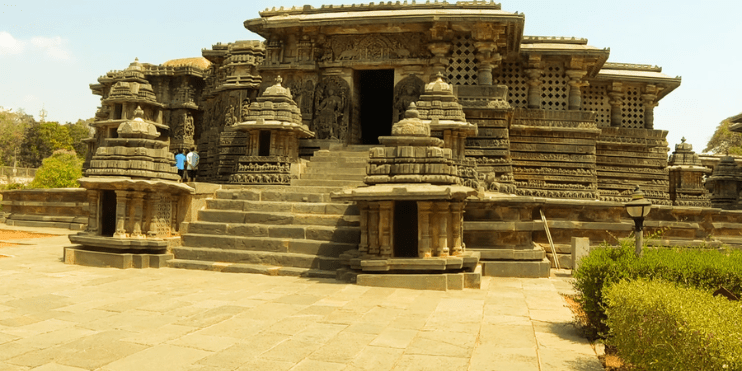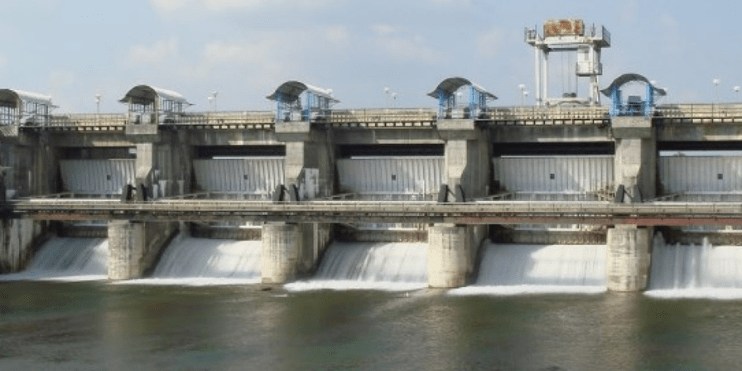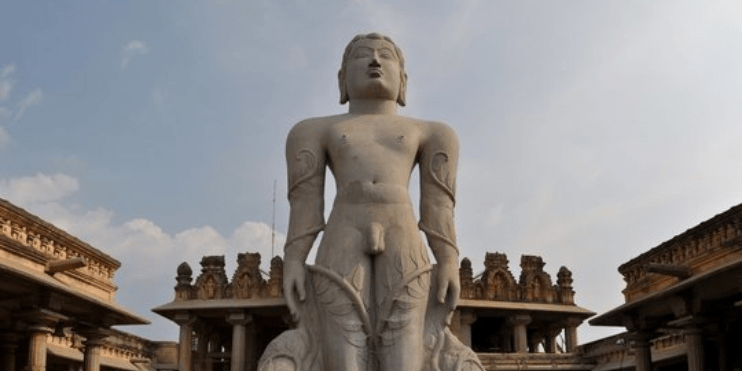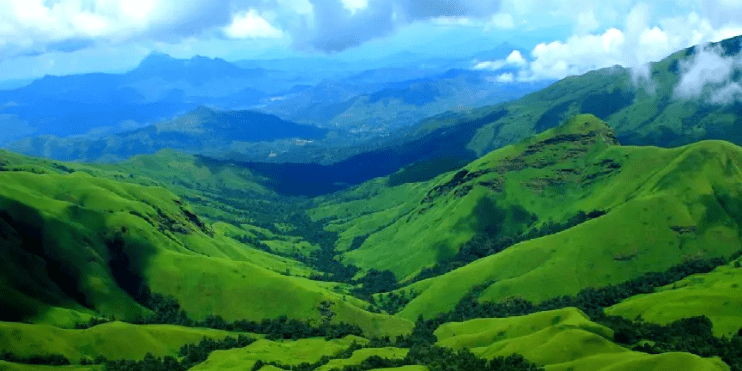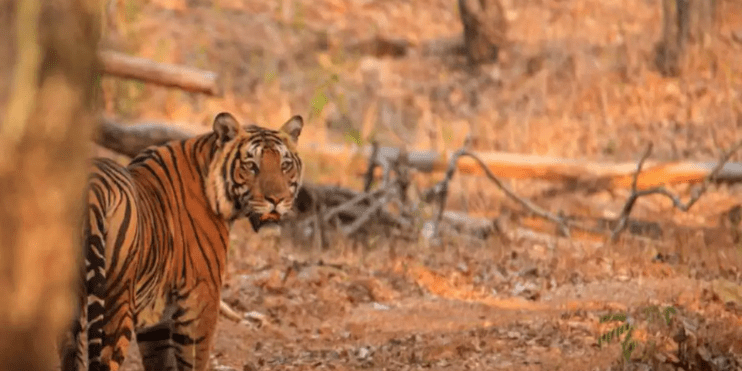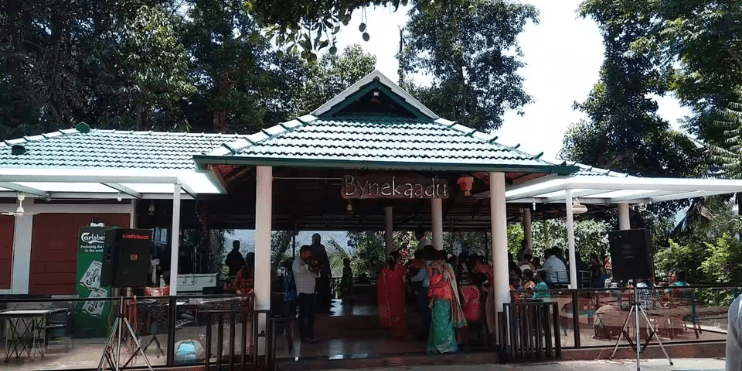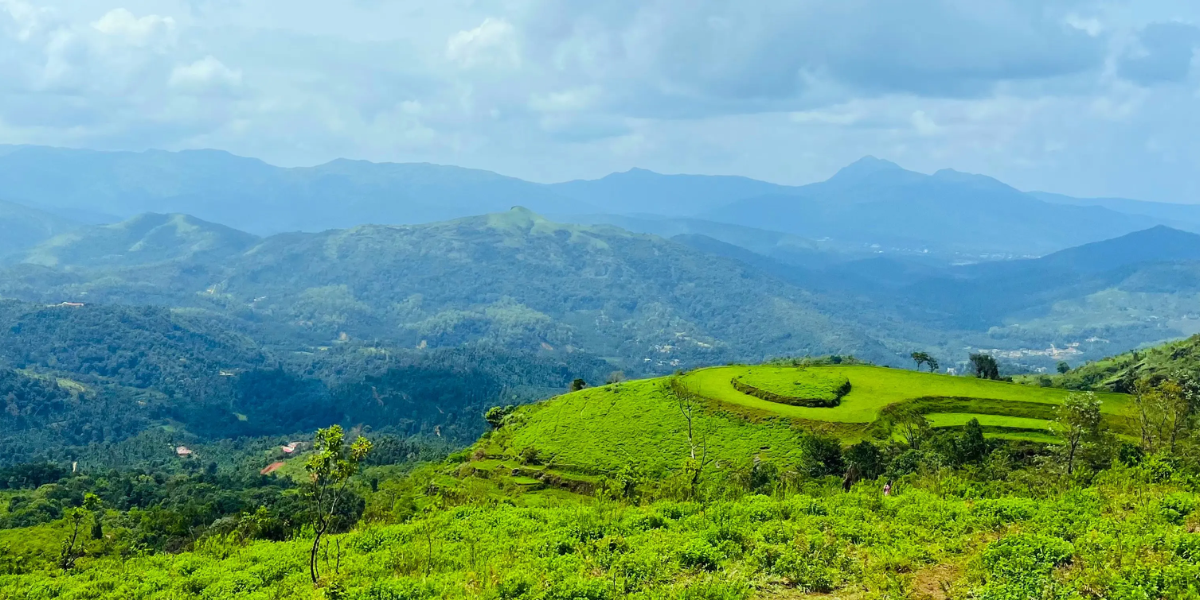Nestled in the Western Ghats of Karnataka, Bandaje Falls is a majestic testament to nature’s beauty. This hidden gem, cascading from a height of approximately 200 feet, offers a serene escape from the hustle and bustle of city life. The waterfall, surrounded by lush greenery and dense forests, is an idyll for nature lovers and adventure seekers.
The journey to Bandaje Falls is an adventure in itself. The trek, known for its moderate difficulty, takes you through dense forests, grasslands, and historical ruins. This adventure culminates in the breathtaking sight of the waterfall, making every step worthwhile. The trek and the waterfall offer an exhilarating adventure that leaves an everlasting impression on every visitor.
History and Background of Bandaje Falls

Origin and Historical Significance of Bandaje Falls
Bandaje Falls, also known as Bandaje Arbi, has a rich historical background intertwined with local legends. The name “Bandaje” is believed to have originated from the Kannada words “Banda,” meaning rocks, and “Je,” meaning water, depicting the waterfall’s rocky descent. The falls have been a part of local folklore, adding a mystical charm to their allure.
Connection to the Ballalarayana Durga Fort
The trek to Bandaje Falls is closely linked to the historical Ballalarayana Durga Fort. This ancient fort, built during the Hoysala dynasty in the 12th century, offers a glimpse into the region’s historical significance. The ruins of the fort, located on the trek route, serve as a reminder of the area’s rich heritage and provide panoramic views of the surrounding landscape.
“The ruins of Ballalarayana Durga Fort stand as silent sentinels of a bygone era, overlooking the lush valleys and hills that cradle Bandaje Falls.”
Cultural and Local Significance
Bandaje Falls holds cultural significance for the local communities. It is not just a tourist spot but also a part of their heritage. Local festivals and rituals often reference the falls, highlighting its importance in the region’s cultural tapestry. Tourists are urged to respect the local customs and traditions while exploring this natural wonder.
How to Reach Bandaje Falls
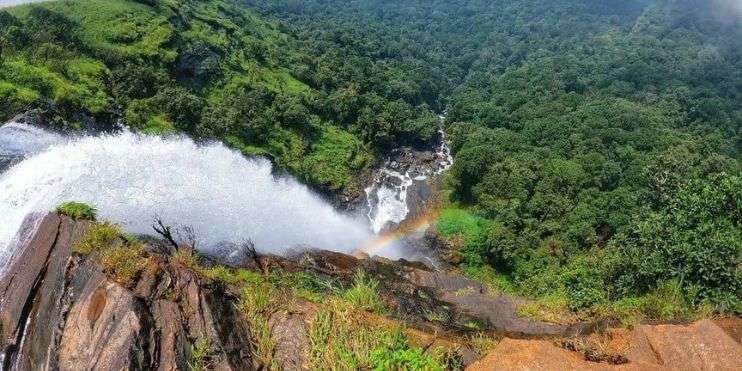
Nearest Major Cities and Transportation Options
The nearest major cities to Bandaje Falls are Bangalore and Mangalore. From Bangalore, the distance to the starting point of the trek is approximately 280 kilometers, while from Mangalore, it is around 100 kilometers. Both cities offer ample transportation options, including buses and cabs, making it suitable for travelers to reach the trek’s starting point.
Detailed Directions to the Starting Point of the Trek
To reach the starting point of the trek, one must travel to Sunkasale village in the Chikmagalur district. From Bangalore, take the NH75 towards Hassan, then continue on SH57 towards Mudigere. From there, follow the signs to Sunkasale village. The trek begins from the Kalabhairaveshwara Temple, a local landmark.
“Starting early from Bangalore ensures you avoid the midday heat and enjoy the trek in cooler morning temperatures.”
Importance of Starting Early for the Best Experience
Starting the trek early in the morning is crucial for several reasons. The cooler temperatures make the trek more comfortable, and the early start allows trekkers to reach the falls by noon, providing ample time to enjoy the surroundings. The early morning light also enhances the scenic beauty, creating excellent photography opportunities.
The Trekking Experience
Overview of the Trek Difficulty and Duration
The Bandaje Falls trek is moderate and suitable for trekkers with a decent fitness level. The trek spans approximately 12 kilometers round trip and takes about 5 to 6 hours to complete, depending on one’s pace. The trail includes steep ascents, dense forests, and open grasslands, offering a varied trekking experience.
Starting Point to Ballalarayana Durga Fort

The trek’s start, from the starting point to Ballalarayana Durga Fort, covers a distance of about 3 kilometers and typically takes around 1.5 hours to complete. This part of the trek is relatively steep and challenging, winding through dense forest trails. The fort offers a resting point and an opportunity to explore historical ruins.
Ballalarayana Durga Fort to Bandaje Falls

The second section, from the fort to Bandaje Falls, is approximately 3.5 kilometers and takes around 2.5 hours. This trek part is more accessible, traversing open grasslands and rolling hills. The final descent to the falls can be tricky, but seeing the cascading water makes it all worthwhile.
Scenic Viewpoints Along the Trek

The trek to Bandaje Falls is dotted with scenic highlights and viewpoints. The dense forests, vibrant with flora and fauna, give way to panoramic views from the Ballalarayana Durga Fort. As you approach the falls, the landscape reveals stunning vistas of the Western Ghats. Critical viewpoints offer perfect spots for rest and photography.
“The trek offers a blend of dense forest trails and open grasslands, each step revealing a new facet of the Western Ghats’ beauty.”
Tips for First-Time Trekkers
First-time trekkers should prepare adequately for the Bandaje Falls trek. Wear comfortable trekking shoes with a good grip, carry sufficient water, and pack light snacks. Hiring a local guide is advisable, especially if unfamiliar with the terrain. Before leaving your journey, check the weather forecast because things might change quickly.
Best Time to Visit Bandaje Falls
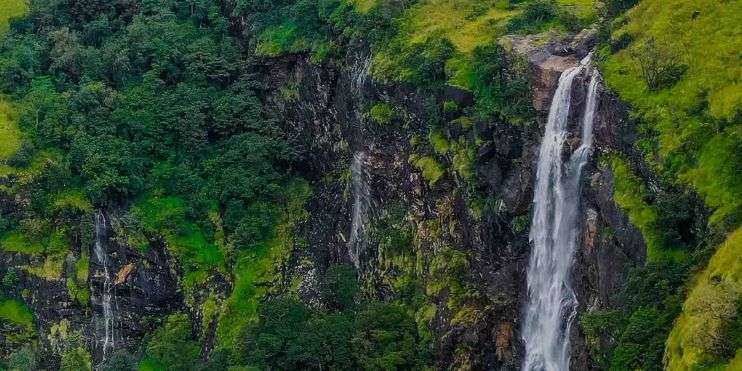
Seasonal Variations and Their Impact on the Trek
The trek to Bandaje Falls varies significantly with the seasons. During the monsoon (June to September), the trail becomes slippery and challenging, but the falls are at their most dramatic. Post-monsoon (October to February) is the best time to visit, with clear skies and lush greenery. Summer months (March to May) can be hot, and the falls may have reduced flow.
Ideal Months for Visiting
The ideal months for visiting Bandaje Falls are from October to February. The weather is pleasing during this time, and the landscape is rejuvenated after the monsoon rains. Though not at peak flow, the trek is more manageable, and the falls offer a spectacular sight.
“Visiting Bandaje Falls post-monsoon ensures you experience the trek at its most picturesque, with vibrant greenery and pleasant weather.”
What to Expect During Different Seasons
During the post-monsoon season, trekkers can expect clear views, vibrant flora, and comfortable trekking conditions. The monsoon season, while challenging, offers the thrill of navigating through a rain-soaked forest and witnessing the falls in full force. The trek can be hot and demanding in summer, reducing the falls to a trickle.
Camping at Bandaje Falls
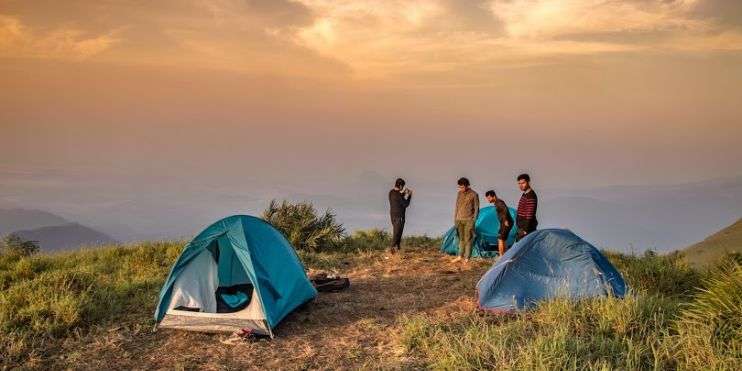
Camping Experience Near the Falls
Camping near Bandaje Falls is a unique experience, offering a chance to connect with nature in a tranquil setting. The campsite, located close to the falls, provides a serene environment under a canopy of stars. The sound of the waterfall adds to the ambiance, creating a perfect backdrop for an overnight adventure.
Necessary Permissions and Regulations
Camping at Bandaje Falls requires prior permission from local authorities. Adhere to regulations to preserve the natural environment. Campers should carry all necessary equipment, including tents, sleeping bags, and cooking supplies. It’s crucial to leave no trace and ensure the campsite is clean.
“Camping at Bandaje Falls offers a chance to immerse in nature’s tranquility, making for an unforgettable experience under the stars.”
Tips for a Safe and Enjoyable Camping Experience
For a safe camping experience, it is essential to carry sufficient water and food supplies, a first aid kit, and weather-appropriate clothing. Campers should also be prepared for sudden weather changes and pack accordingly. Camping in designated areas and following all safety policies provided by local authorities is advisable.
Nearby Attractions of Bandaje Falls
Exploring Bandaje Falls opens the door to a wealth of nearby attractions that are equally captivating. Each destination offers a unique glimpse into Karnataka’s natural and historical richness. Here are some must-visit places near Bandaje Falls, complete with their distances from the waterfall:
Mullayanagiri Peak
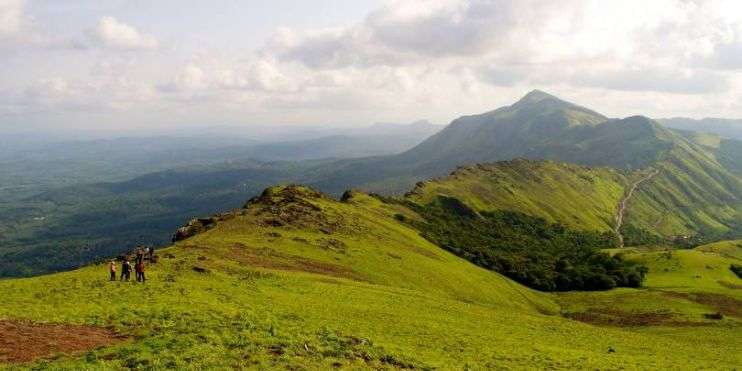
- Distance from Bandaje Falls: Approximately 100 kilometers
Standing tall as the highest peak in Karnataka, Mullayanagiri offers panoramic views of the Western Ghats. The peak is a favorite among trekkers and nature enthusiasts, providing a challenging yet rewarding climb. The cool breeze and the stunning sunrise views make it a memorable visit.
“Mullayanagiri Peak offers an unparalleled trekking experience with its breathtaking vistas and serene environment.”
Baba Budangiri Dargah
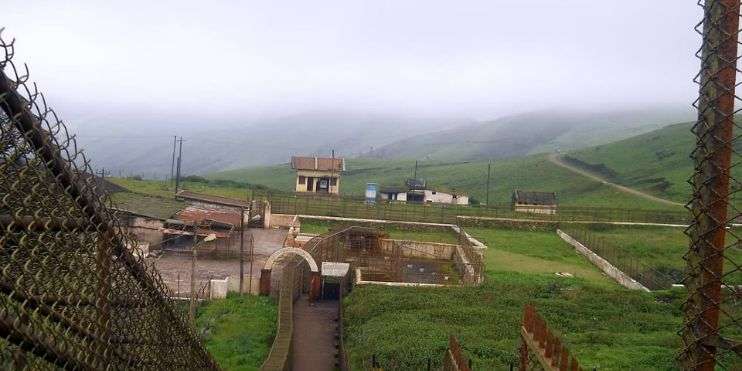
- Distance from Bandaje Falls: Approximately 100 kilometers
Baba Budangiri is a respected pilgrimage site for both Hindus and Muslims. Known for its historical and spiritual significance, the dargah is situated on a scenic hill range that offers splendid views of the surrounding landscapes. The site is also known for its unique mountain flowers called Kurinji, which bloom once every 12 years.
“The spiritual ambiance and the scenic beauty of Baba Budangiri Dargah make it a must-visit.”
Bhadra Wildlife Sanctuary

- Distance from Bandaje Falls: Approximately 100 kilometers
This sanctuary is a haven for wildlife lovers. Spread over 490 square kilometers, Bhadra Wildlife Sanctuary is home to diverse flora and fauna, including tigers, elephants, and various species of birds. Explore the region’s rich biodiversity with available safari tours for visitors.
“Bhadra Wildlife Sanctuary offers an immersive experience into the wild, perfect for nature lovers and adventure seekers.”
Ballalarayana Durga Fort
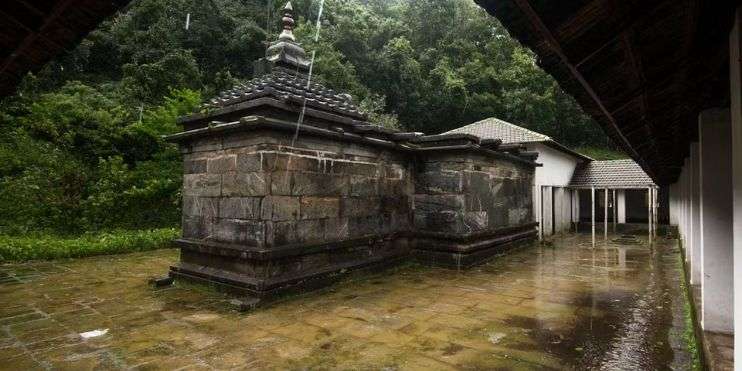
- Distance from Bandaje Falls: Approximately 3.5 kilometers (part of the trek)
This ancient fort, dating back to the 12th century, is a significant historical landmark on the way to Bandaje Falls. The fortress shows spectacular vistas of the surrounding hills and valleys, making it an ideal location for photography and exploration.
“Exploring the ruins of Ballalarayana Durga Fort is like stepping back in time, with its historical charm and scenic vistas.”
Charmadi Ghat

- Distance from Bandaje Falls: Approximately 53 kilometers
Charmadi Ghat is a picturesque mountain pass in the Western Ghats, known for its stunning landscapes and winding roads. It is a popular spot for road trips, offering breathtaking vistas of the valleys, waterfalls, and forests. The ghat is also a gateway to several trekking trails in the region.
“A drive through Charmadi Ghat is an experience in itself, with its mesmerizing views and serene surroundings.”
Bynekaadu: A Serene Retreat Amidst Nature
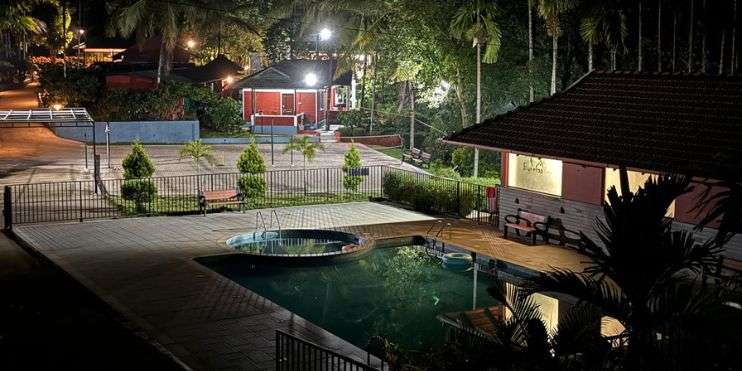
Welcome to Bynekaadu, a haven of tranquility and one of the best resorts in Chikmagalur. Our resort offers an ideal escape for those seeking peace and adventure in the lush greenery of the Western Ghats. Nestled close to Bandaje Falls, Bynekaadu provides a perfect blend of nature and luxury, making it a top choice for travelers looking for a resort in Chikmagalur.
Your Perfect Getaway at Bynekaadu
We invite you to experience the unique charm of Bynekaadu. Our resort is designed to provide a peaceful retreat with luxurious accommodations and personalized services. Whether you’re here to unwind after a challenging trek to Bandaje Falls or to explore the nearby attractions, Bynekaadu is your perfect base. Enjoy the natural beauty, indulge in delicious local cuisine, and rejuvenate your senses.
“At Bynekaadu, we believe in creating unforgettable experiences. Our resort is not just a place to stay, but a destination where you can reconnect with nature and yourself.”
Why Choose Bynekaadu?
Bynekaadu offers a range of activities and amenities tailored to enhance your stay. All the experiences offered here are meant to be remembered, including the guided nature walks, the stargazing, and the nature walks. Our staff is committed to providing your comfort and helping you explore the region’s best. With our exquisite pool, Bynekaadu stands out as one of the best resorts in Chikmagalur with a pool.
Conclusion
Bandaje Falls offers an unparalleled adventure experience that combines natural beauty, historical intrigue, and thrilling trekking. The journey to the falls, with its challenging trails and scenic landscapes, is a rewarding experience that leaves a lasting impression.
Visiting Bandaje Falls is about witnessing a beautiful waterfall and embracing an adventure that connects you with nature and history. It calls all adventure enthusiasts to explore, enjoy, and preserve this hidden gem in Karnataka. Ready to experience Bynekaadu for yourself? Contact us today to book your stay and uncover the ideal combination of luxury and nature.


